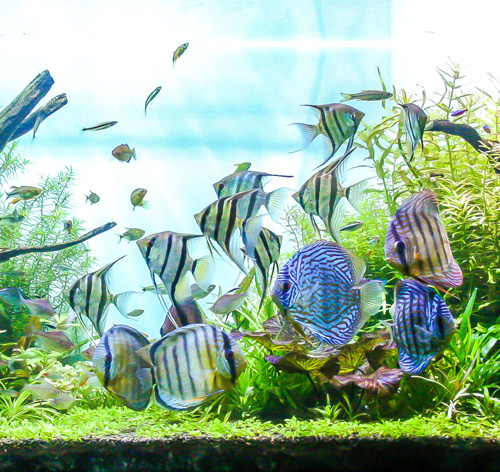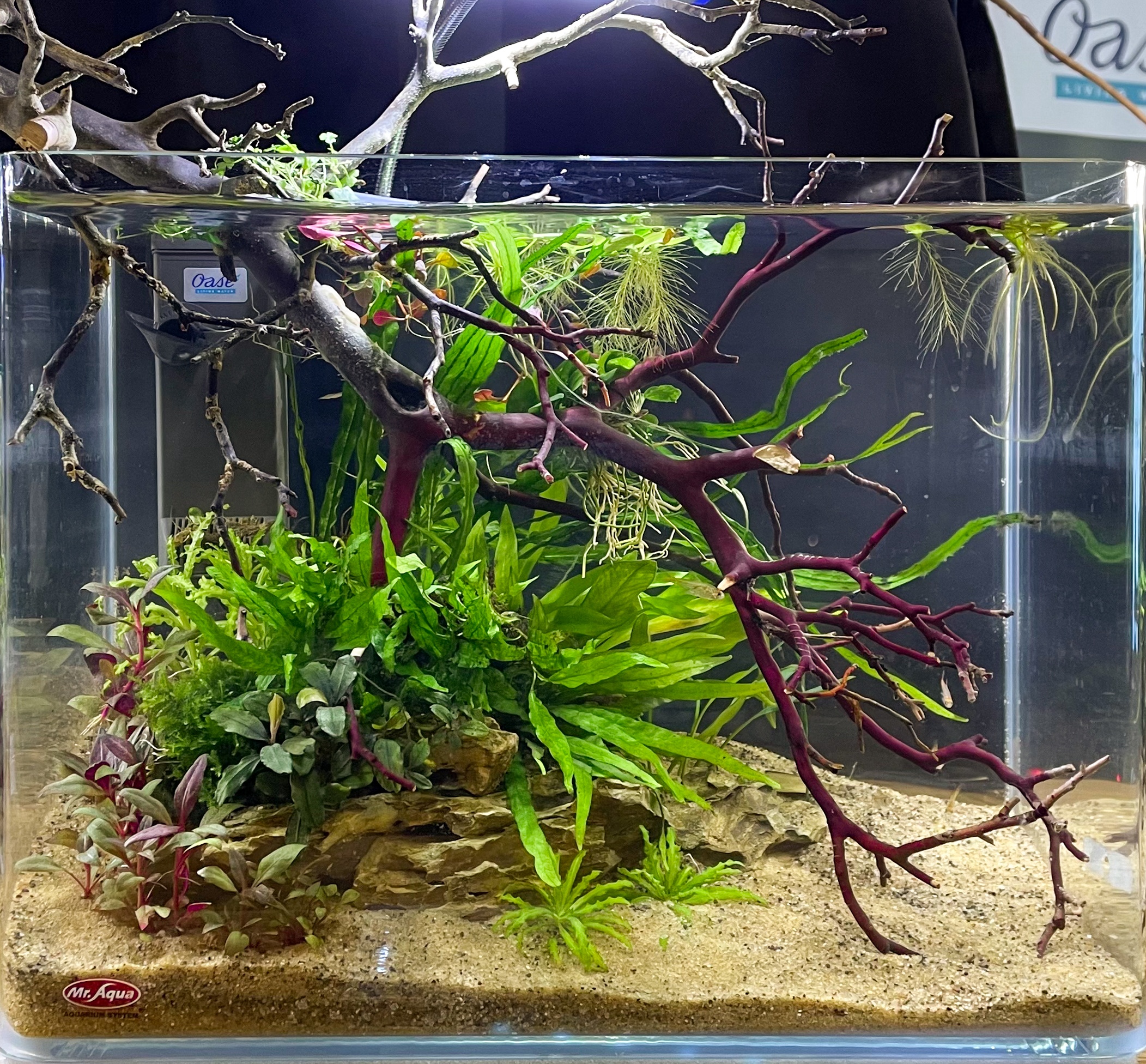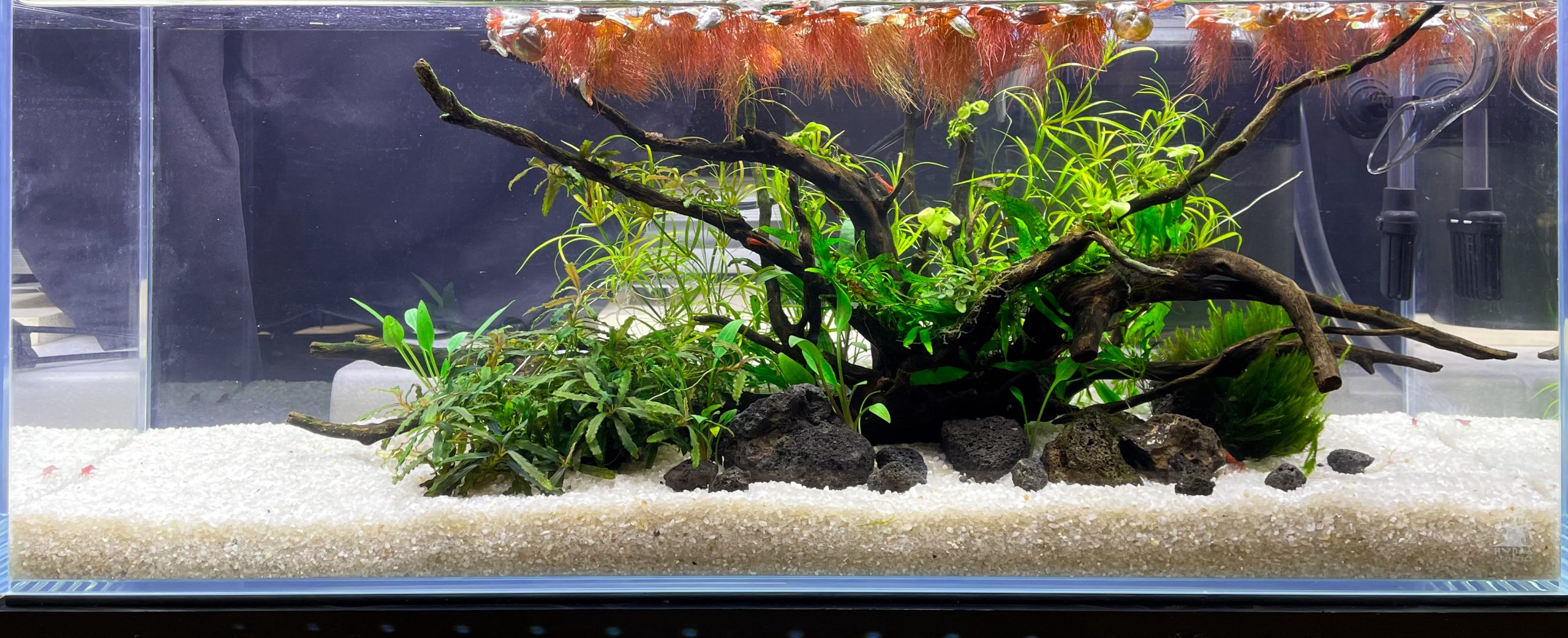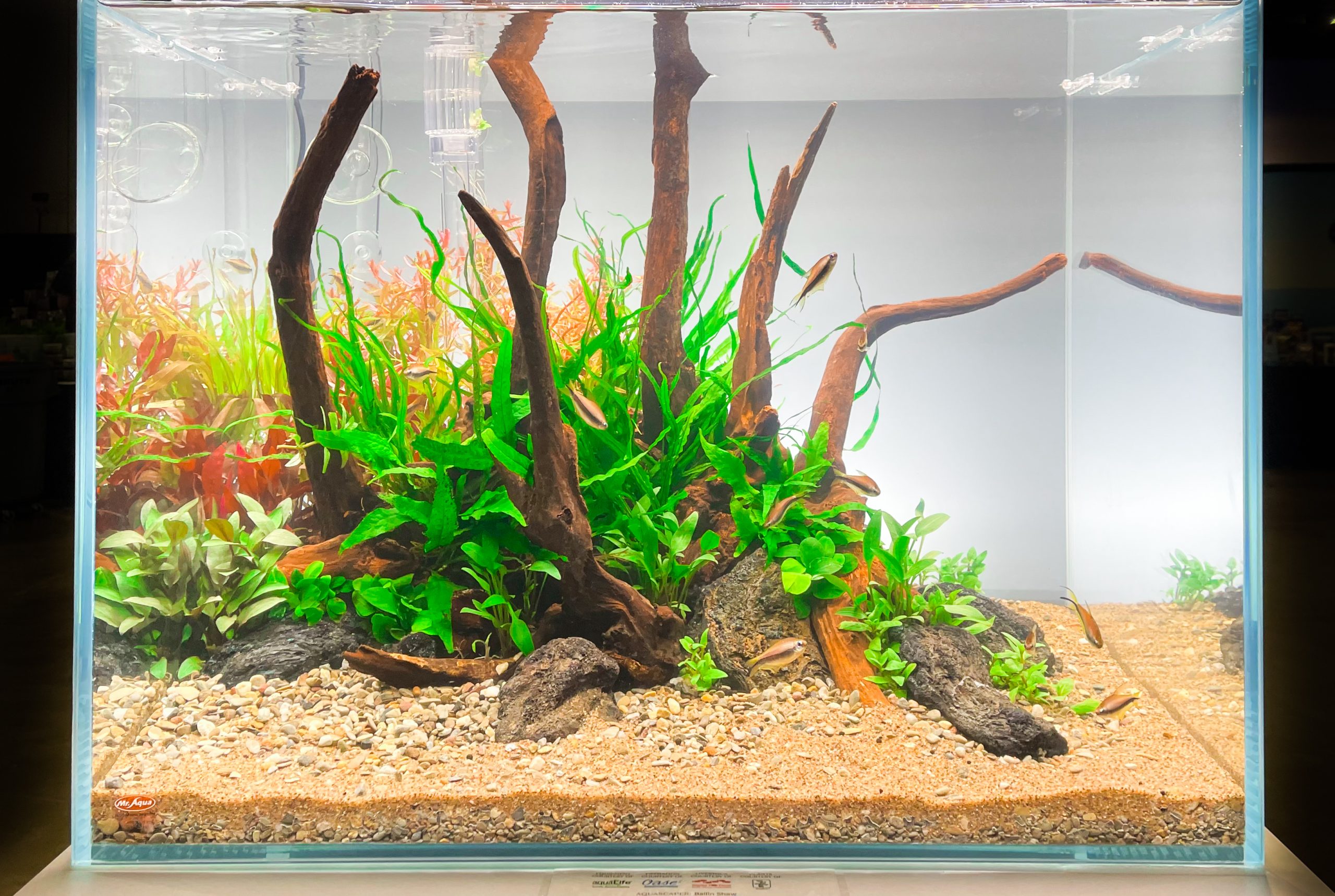Aquascaping Technique, Information, Inspiration, Solution
1 Aquascaping Solution: The Basics Introducing Aquascaping

As a beginner aquarium hobbyist, a question you likely will have is, “what is aquascaping“?
Aquascaping tanks or “nature” aquariums are a beautiful aquarium style. Founded by Takashi Amano in Japan, its popularity comes from bringing a piece of nature into homes. Aquascaped aquariums are pieces of living art in the home. They are similar to the perfect garden spot in a yard. The Expression “Nature Aquarium” describes the essence of planted tanks using this decoration method. These aquariums are about plants and the harmony of plants, fish, stones, and wood in a natural setting. Some of us are fortunate to have the unbelievable original books published by Tropical Fish Hobbyist that contain the high gloss color chrome images of some of Amano’s creations.
People have been keeping fish for centuries, and a number of brilliant ideas and concepts have emerged within the aquarium hobby. Amano revolutionized the hobby in the 80’s… He realized that technology could allow a return to “natural roots” and reproduced natural underwater habitats in aquariums that people longed for.
The concept of aquascaping is a natural approach far different from a conventional aquarium. Unlike conventional aquariums, these aquariums are strongly lit and can reproduce vibrant underwater gardens. In these displays natural photosynthesis of plants produce an oxygen rich environment with natural filtration of plants combined with biological filters. This is very similar to bog filters used in water garden ponds.
Traditional Aquarium advantages and disadvantages compared to Modern Nature Aquariums.

Read More: Frequently asked Questions about CO2, Diffusers, and Glassware
Traditional Aquariums Advantages:
1. The entry price is often lower than on aquascaping setups.
2. Due to low light, there is less risk of excess algae growth.
3. Lids or closed top tanks reduce fish jumping and help prevent unwanted access.
4. There are often fewer parts, and setup is quicker.
5. Closed lids help prevent evaporation and thus “topping the tank off” or adding water is needed less often.
Traditional Aquariums Disadvantages compared to “Nature Aquariums”:
1. Many smaller entry level filters are often undersized and do not provide adequate long term biological filtration. This can cause unwanted algae and fish loss over time.
2. Due to the closed lid, heat is trapped, which can cause the water temperature to rise quickly when intense lighting is used. The tank may not cool down enough with less ventilation and gas exchange. In water with higher temperatures, the decomposition of organic matter is faster, and the filter efficiency is not always adequate to decompose the resulting ammonia and organics rapidly. Thus, on warmer days, the ammonia load of fish and the risk of algae growth may increase.
3. Closed lids prevent evaporation and can lead to tanks over heating.
4. Closed lids are not as aesthetically pleasing. They do not allow that unique look down into the rippling aquarium.
5. Lids block some of the light needed for plants.
6. Most traditional aquariums are unavailable in Low Iron or Ultra Clear Glass. The feeling of looking into “Pure” water is not possible in a rimmed or traditional aquarium. They provide more of a window look.






For more inspiration see these great aquascaped aquariums In Solution 2 Inspiration.
Featured Articles:
Aquascaping with Jeff Miotke Part 1 Hardscaping with Q&A
Aquascaping with Jeff Miotke Part 2 Planting a Rimless Aquarium with Q&A
How to Maintain and Siphon Aquascaped Aquarium Substrates and Soils?
Professional Tools for Cultivating Your Planted Aquarium
Aquascaping 101: An Aquascaping Technique Guide
Planted Aquariums: Quick Tips for Success
Getting Started in Planted Aquariums

